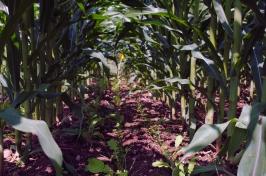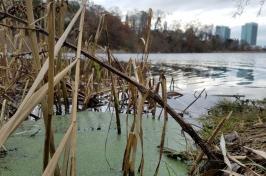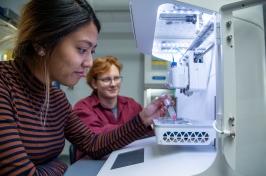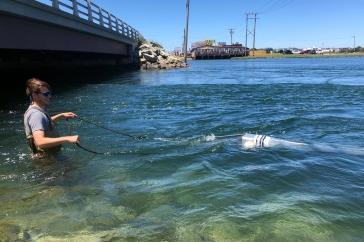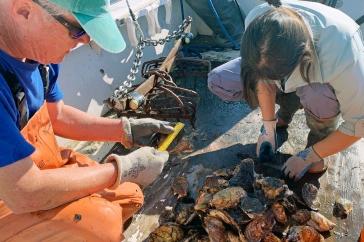一种叫做浮萍的水生植物, 以及生活在它们上面和里面的微生物, could one day be artificially engineered to improve cleansing chemicals from urban and agricultural environments in water that runs off into retention ponds and other stormwater. That’s a focus of research led by Anna O'Brien at the University of New Hampshire’s 生命科学与农业学院.
O 'Brien也是一名科学家 新罕布什尔州农业实验站 (nha), has spent her career studying plants and their relation to the microbial organisms that live on or inside them, as well as how this microbiome reacts to environmental stressors such as pollution. 在主要研究,她对普通浮萍(属中的种 浮萍属), 池塘里的水生植物, 湖泊和缓慢流动的溪流遍布世界各地, 包括新罕布什尔州和新英格兰东北部.
“Duckweed is an ideal plant to study and consider for applied uses because it grows rapidly and easily, 并且是丰富和广泛的,奥勃良说, 分子系的助理教授, 细胞和生物医学科学.
“By understanding and harnessing the natural diversity of these plant-microbe systems, 我们可以改进人工湿地的设计和效率, ultimately contributing to the health and sustainability of freshwater ecosystems.——安娜·奥布莱恩, 分子系的助理教授, 细胞, 和生物医学科学
Some of O’Brien’s research has centered on duckweed’s bioremediation capabilities— the plant’s ability to remove contaminants from water. As part of a study featured in the NHAES's INSPIRED Water Quality and Management issue, O’Brien constructed thousands of small test duckweed environments meant to mimic larger environments—and their microbiomes—by collecting plant and water samples from 50 different sites that varied in their level of urbanization. 的se plant–microbiome combinations were observed after adding mixtures of road salt and benzotriazole, a chemical used to inhibit corrosion of certain metals and found frequently in urban runoff. 一旦进入土壤和水, the slowly degrading benzotriazole could adversely impact plant growth and animals, 尤其是鱼.
“Our goal was to understand how the benzotriazole and salt impacted the duckweed–microbiome systems,奥勃良说. “What we found was that the duckweed–microbiome mixtures could transform this chemical into byproducts predicted to be less toxic, even in the high-salt conditions that are often typical of regional urban runoff.”
据奥布莱恩说, 这些信息可以为市政规划者提供信息, natural resource managers and non-profit organization professionals in developing targeted wetlands for stormwater management.
“By understanding and harnessing the natural diversity of these plant-microbe systems, 我们可以改进人工湿地的设计和效率, ultimately contributing to the health and sustainability of freshwater ecosystems,奥勃良补充说.
O’Brien and her team are now investigating the use of duckweed as a natural soil additive, 特别是在农业环境中, to help lessen reliance on and reduce nutrient runoff from chemical fertilizers.
你可以阅读有关这项研究和相关研究 启发水质与管理研究报告. 的 启发式研究报告 是由新罕布什尔农业实验站生产的.
该项目由NSERC发现基金资助, 多伦多大学XSeed基金, NSERC加拿大研究主席计划资助, 以及戈登和贝蒂·摩尔基金会的资助.
-
写的:
尼古拉斯·高斯林,06年 COLSA/NH农业试验站 尼古拉斯.gosling@kelseygrill.net




























